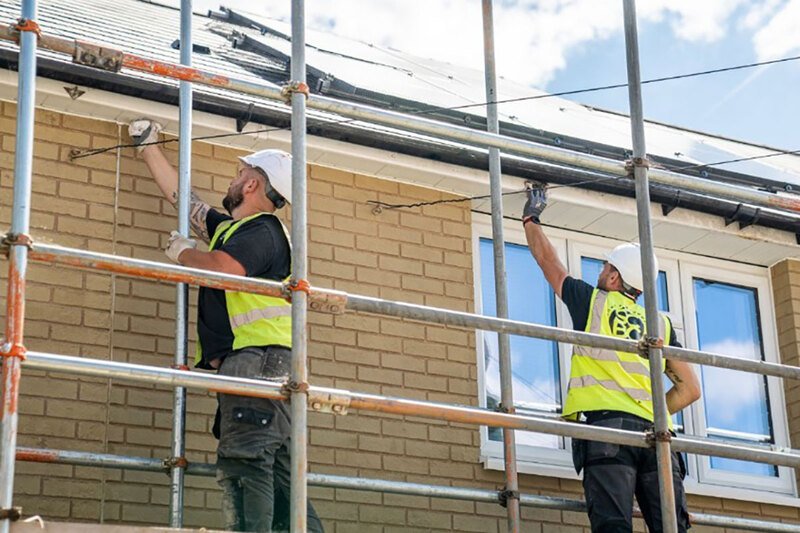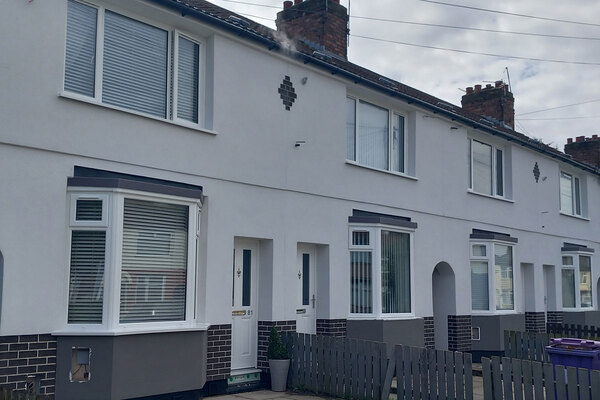Just 27% of social housing retrofits completed under flagship government scheme
An £800m government scheme to decarbonise social homes has underperformed with less than a third of targeted retrofits completed, Inside Housing can reveal.

Wave 2.1 of the Social Housing Decarbonisation Fund (SHDF), which was launched in September 2022, aimed to fit 94,096 social homes in England with green upgrades.
But as of June, just 25,009 homes – or 27% of the original target – had been successfully retrofitted, according to the latest figures from the Department for Energy Security and Net Zero (DESNZ).
Social homes have also had fewer improvements than planned, with 51,500 energy efficiency measures installed under Wave 2.1, compared with nearly 297,000 promised when the programme was announced under the previous Conservative government.
Wide regional disparities were found too, with London accounting for just 6% of retrofit installations despite having the greatest concentration of social housing in England. Yorkshire and the Humber saw the greatest share with 16% of total installations under Wave 2.1, followed by the West Midlands at 15%.
Landlords participating in Wave 2.1 were originally given until 30 September to complete their retrofit programmes. Several projects have since been extended, but it is highly unlikely that Wave 2.1 will meet its initial performance goals.
DESNZ was approached for comment on whether it will extend the deadline of Wave 2.1 and if so, for how long.
A process report published alongside the data said it is likely that recent delivery is “significantly under-reported”, with “a substantial proportion” of grant recipients reporting installations up to nine months late. Delivery figures are therefore expected to increase over the coming months, officials said.
Nevertheless, the underperformance of Wave 2.1 raises serious questions about the efficacy of the SHDF, which continues under the current government. Labour has rebadged the scheme as the Warm Homes: Social Housing Fund and awarded £1.2bn to housing providers in Wave 3 of the fund, which is now partway through its first year, with few programmes having got off the ground.
Officials said Wave 3 would offer more flexibility to landlords than previous iterations of the programme, by including a strategic partnership route for partners with a proven record of retrofit delivery.
Progress of retrofits under Wave 2.1 has been dogged by technical problems, reporting requirements and resident engagement issues.
Asbestos was the most mentioned technical problem impacting the progress of installations, while some landlords cited residents refusing access in blocks of flats, stalling entire projects.
Delays in dealing with distribution network operators on solar panel connections were also cited as severe risks.
Costs have consistently overshot expectations. The average cost of external wall insulation, for example, rose by 25% compared with bid assumptions to £23,300, while air source heat pumps came in 34% higher at £17,700.
Costs have grown dramatically within the programme as well – a year ago, external wall insulation costs were 17% above bids and air source heat pump costs were 7% above bids.
At the same time, the number of measures per property fell from 3.2 in original plans to 2.0 actually delivered as of June, reflecting a shallower depth of retrofit.
Progress has been made despite the setbacks. Where works have been completed, the proportion of homes achieving a top EPC rating of A-C leapt from 2% before installation to 99% afterwards.
Anna Moore, founder of retrofit specialist Domna Homes, said: “The two new reports cover data until July 2024 and June 2025 – with worrying cost growth over the lifetime of the programme and a reduction in the amount of work actually being done to houses as a result.
“With little time left until SHDF Wave 2.1 ends, it looks very unlikely that we will hit our targets and actually spend this much-needed money – in large part due to administrative red tape in procurement, poor planning, and flawed initial designs.
“Another striking statistic is that very few small housing associations have been awarded and have participated, despite owning some of the country’s most in-need stock. Similarly, only about half of local authorities have tapped into this funding.
“We are also struck by the regional disparities. London has the highest number of socially rented homes in England, but accounted for just 6% of retrofits delivered to date.
“We need meaningful differences in cost caps and support on the ‘boring but important’ things like parking permits that truly get in the way of delivery.”
A DESNZ spokesperson said: “The energy shocks of recent years have shown the urgent need to upgrade British homes. Our Warm Homes Plan will make them cheaper and cleaner to run, rolling out measures from new insulation to solar and heat pumps.
“We are investing £13.2bn to improve up to five million homes over this Parliament, helping families to cut their energy bills for good.”
Last year, Inside Housing revealed that councils gave back £6.4m to the government of the money that they had been granted under earlier waves of the SHDF.
Inflation, council budget constraints and complications around homes bought through Right to Buy were cited as reasons for returning the funding.


